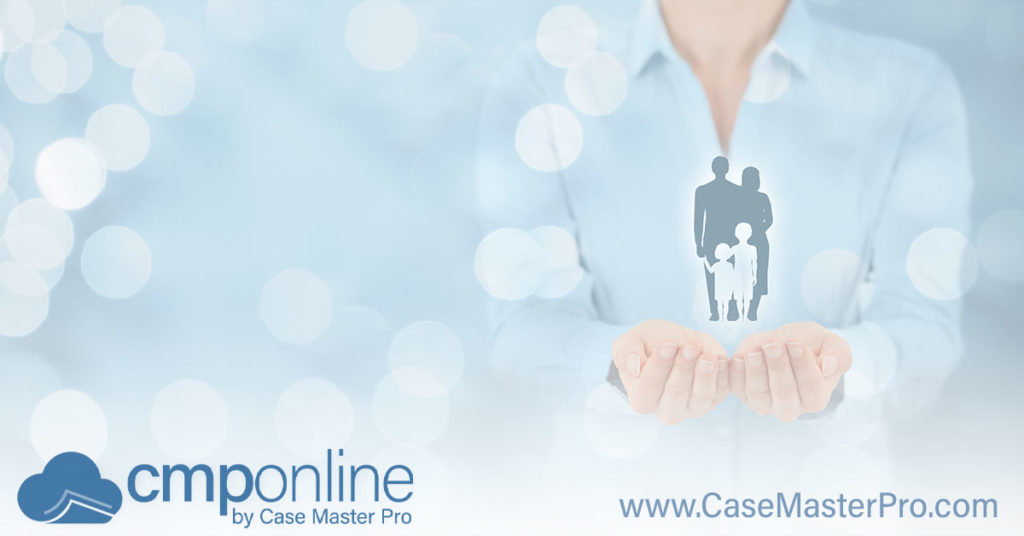
All too often, attorneys will come across a sticky situation where their client’s are left with a substantial financial burden due to someone else’s negligence. This is precisely when subrogation rights for effective debt recovery come in.
Imagine unsuspecting homeowners who recently experience a devastating house fire due to a malfunction in their newly purchased electric heating system. Naturally, the insurance company promptly compensates for the extensive property damage, temporary housing, and additional living expenses incurred during the recovery, but it is evident that the heating system’s manufacturer may be liable for the incident due to a design flaw that caused the fire.
As seasoned professionals in the field of debt collection, subrogation lawyers are all too familiar with situations like this.
Are you still with us? Good, because we’re about to dive deeper into legal safety nets. We’ll tackle subjects such as rights of recovery waivers and discuss their effect on insurance coverage.
Understanding the Legal Framework of Subrogation Rights
When you dive into the world of insurance, one concept that’s likely to catch your attention is subrogation rights. But what are these rights exactly? To put it simply, they allow an insurer to step into the shoes of their insured after paying a claim.
In legal terms, subrogation refers to one party (usually an insurance company) taking on another’s right to collect debt or damages. For example, Bob got into an accident due to Alice’s texting while driving. Now if Bob had comprehensive auto coverage, his insurer would cover his losses – but then through exercising its subrogation rights in the insurance claims process could recover those costs from Alice (or more accurately her insurers).
This principle ensures that financial burdens fall where they rightly belong and not on innocent parties or their insurers who’ve paid out under policies. When done correctly and effectively, everyone wins.
The Key Principles Behind Subrogation Rights

The importance of subrogation rights cannot be overstated as they help balance out responsibilities among different parties involved in an accident or incident causing loss or damage. A crucial aspect here is understanding how these principles function within specific contexts, such as waiver of subrogation rights and Veterans Administration subrogation rights.
A waiver, for instance, implies relinquishing recovery options against other parties involved, which can drastically affect dynamics between policyholders and their carriers, especially with respect to premium adjustments; while Veterans Administration has special provisions concerning health care cost recoupment via enforcing its own set rules on this matter.
How Subrogation Rights Work
In the end, it’s all about making sure that losses land where they’re supposed to. An insurance company pays out a claim to its insured and then steps in their shoes (or assumes their subrogation rights) to recover those funds from whoever caused the loss.
Handling this process means navigating complex legal issues, like ERISA subrogation. It’s a tricky path but one that can be managed with careful attention and expertise.
Key Takeaway: Subrogation rights let insurance companies step in for their clients after paying a claim, to recover costs from those responsible. They ensure financial burdens fall where they should and help balance responsibilities among involved parties. However, navigating these rights can be complex due to legal intricacies like waivers and specific rules set by institutions, such as the Veterans Administration.
The Role and Impact of Subrogation Waivers
Subrogation waivers play a crucial role in the dynamics between insured parties, insurers, and potential at-fault third parties. These waivers can shift risk from one party to another, most commonly moving it away from those involved directly in an incident to insurance companies.
In particular contexts like construction contracts, subrogation waivers are often employed as a means of managing risks among various project participants. Legal cases, such as Michigan Insurance Co. v. Grand Rapids Fire Protection, Inc., illustrate how these clauses impact claim recoveries when damage occurs due to negligence or other issues related to contractual performance.
Navigating through Subrogation Waivers
Jurisdiction plays a significant part in the application and interpretation of subrogation rights waiver provisions within insurance policies or standalone agreements because not all jurisdictions view them similarly.
For example, some courts need notice or consent for these waivers to be considered valid, while others consider them applicable regardless.
Even state laws can limit their validity – making navigation more complex than expected.
A savvy insurer will take steps that allow protection against possible negative effects resulting from subrogations being waived off by policyholders. They might resort either to including exclusions specifically addressing this scenario within their policy language or opting for higher premiums – thereby transferring costs back onto those who sought out such arrangements initially.
This flexibility is vital considering its potential implications on coverage offered under different types of insurance policies: property casualty insurances may see greater use compared with life assurance products where recovery prospects remain relatively lower given mortality-related uncertainties inherent therein.
Subrogation waivers can shake up the insurance game, shifting risk and changing claim recoveries. Don't get caught off guard – savvy insurers know how to protect their interests. #InsuranceInsights #RiskManagement Share on XProtecting Interests – Insured Parties and Insurance Companies

The dance between insured parties and insurance companies can often feel like a delicate ballet, with both sides striving to protect their interests. A key part of this performance is understanding the nuances within insurance contracts.
Reading insurance contracts carefully helps in uncovering hidden terms that could affect subrogation rights or cause confusion about coverage limits. The small print may seem daunting but overlooking it might mean missing out on crucial details, such as the impact of waivers on your insurance coverage.
A notable point is how insurers shield themselves from potential pitfalls associated with subrogation waivers. For instance, some carriers take proactive steps by asking about prior waivers during the policy issuance stage itself. Others prefer adding warranties into their policies while few opt for reinsurance to offset risks.
Understanding Measures Against Subrogation Waivers by Insurers
Inquiring about past subrogation waivers allows insurers to gauge risk levels before offering coverages. This practice offers a clear picture regarding any existing liabilities tied up with the insured party which otherwise would have remained unknown until claim time.
An additional layer of protection comes through warranties included within policies. These stipulate certain conditions that must be met for claims payout eligibility, thereby reducing ambiguity at later stages.
Navigating Impact Of Waivers On Insurance Coverage
The ripple effects caused by an ill-considered waiver can destabilize even robustly designed coverages causing undue financial strain upon all stakeholders involved in the contract.
Imagine being caught off guard with an unexpected loss only to find out your insurance won’t cover it because of a subrogation waiver you overlooked. That’s why, making sure waivers don’t invalidate coverage is paramount.
The journey towards safeguarding interests isn’t straightforward. It needs careful navigation through contractual mazes and potential pitfalls. So, take the time to read and understand all elements within your policy contract.
Key Takeaway: Understanding the fine print in insurance contracts can help protect your client’s subrogation rights and ensure no one is caught off guard by waivers. Insurers also have methods to shield themselves from waiver-related risks, such as asking about past waivers or adding warranties into policies.
Parties Benefiting from Waiver of Subrogation Rights
The waiver of subrogation rights plays a pivotal role in contract agreements, particularly within the construction industry. These waivers protect various parties involved in a project by preventing an insurance company from seeking compensation for losses it has paid out.

When you hear “parties released by a waiver of subrogation,” it typically includes everyone involved in the contractual agreement. For instance, property owners, contractors and subcontractors, suppliers, laborers – they all stand to benefit from these waivers. Even design professionals like architects and engineers are covered under this umbrella term.
The benefits extend beyond just protection against legal action. Waiving subrogation rights also promotes harmony among contracting parties as no one is left pointing fingers at others after an insured loss occurs. This atmosphere fosters collaborative efforts towards problem-solving instead of lawsuits.
It’s crucial to note that not every party can enjoy the benefits of waiving subrogation rights. Certain state laws limit the validity of subrogation rights waivers or require explicit notice before such waivers become effective. But when applied correctly, they form an integral part of risk management strategies on many projects across different sectors.
Navigating through Subrogation Waivers
Different jurisdictions handle these waivers differently – some requiring prior consent while others validating them outrightly without any prerequisites.
In certain situations where there’s ambiguity about whether the waiver covers particular events or damages incurred during construction activities (e.g., negligence), clarification might be needed via court interpretation. Thus being familiar with your jurisdiction’s stance becomes essential.
Avoiding Potential Pitfalls
For parties wishing to leverage the benefits of these waivers, careful reading and understanding of insurance contracts are crucial. This scrutiny ensures they fully comprehend the scope of the waiver and that it doesn’t inadvertently invalidate their coverage.
Wrapping up, when you waive subrogation rights, it paves the way for many perks. It helps build stronger relationships between contracting parties and keeps legal disputes to a minimum. Plus, with effective debt management tools like Case Master Pro at your disposal, things become even smoother.
Key Takeaway: For a smooth sailing experience, it’s crucial to understand the scope of the client’s waiver of subrogation rights. It ensures that their coverage isn’t invalidated and they continue to reap its benefits.
Case Master Pro – A Powerful Tool for Subrogation Rights Recovery
CMPOnline by Case Master Pro provides a dynamic platform to maximize recovery on behalf of clients by leveraging subrogation rights effectively.
Leveraging Technology for Efficient Debt Recovery

The power of technology cannot be overstated in today’s world. With its advanced features, Case Master Pro allows attorneys to efficiently manage and recover debts using state-of-the-art tools specifically designed for debt collection processes.
CMP aids legal professionals in handling cases related to subrogation rights. The software assists users from case inception through resolution while tracking every single detail along the way, which ensures thoroughness and accuracy during the process.
In particular, it offers special benefits to set up a customizable interface specific to Subrogation Rights Attorneys.
This makes CMP an invaluable tool when it comes to managing your subrogation cases.
Navigating Complex Legalities Made Easier
The world of law has many twists and turns. With Case Master Pro’s intuitive interface and robust functionality, navigating complicated legalities becomes easier than ever before. Whether dealing with waivers involving third parties or managing claims and damages, this powerful software gives you an edge over others in this challenging field.
An All-In-One Solution That Makes You Smile.
CMP offers a comprehensive solution to streamline the entire process of handling subrogation rights from start to finish, allowing attorneys more time for providing excellent customer service. It streamlines the entire process from beginning to end – giving attorneys more time to focus on what matters most: their clients.
CMPOnline maximizes subrogation recoveries, making complex legalities easier to navigate. With its advanced features and robust functionality, CMP is an all-in-one solution that lets you focus more on clients while efficiently… Share on XNavigating Future Trends in Subrogation Rights
Subrogation rights are a dynamic field, constantly shaped by emerging trends and challenges. For instance, the growth of cyber insurance policies has triggered new subrogation opportunities, but it also presents unique difficulties.
Cyber insurers often struggle to identify at-fault parties or quantify damages accurately. Moreover, courts still grapple with applying traditional legal principles like subrogation to novel issues presented by cyberspace.
The Evolution of Veterans Administration Subrogation Rights
Another evolving area is Veterans Administration subrogation rights. The government continues to refine its approach to recovering healthcare costs from third-party payers for treatment provided to veterans—a practice known as VA Medical Care Recovery Program.
This program aims at relieving taxpayers’ burden while ensuring that injured vets receive necessary care without worrying about out-of-pocket expenses. It’s an example where understanding changes in legislation and policy can be crucial for attorneys working on debt recovery cases involving VA benefits.
ERISA – A Moving Target?
ERISA subrogations present another potential challenge due to ongoing debates over equitable doctrines like the “make whole” rule or “common fund” doctrine—principles sometimes used against ERISA plans seeking reimbursement from beneficiaries’ recoveries.
The application of these doctrines varies across jurisdictions—some enforce them strictly while others do not recognize them at all when dealing with ERISA-governed health plans. Staying ahead means staying informed about significant court rulings and potential legislative changes.
Insurance Company Subrogation Rights – Adapting to a Changing Landscape
The field of insurance company subrogation rights is also in flux, influenced by factors such as the rise of insurtechs, shifting customer expectations, and regulatory adjustments. For instance, the introduction of usage-based insurance (UBI) has implications for determining liability in auto accidents—a key area for subrogation claims.
Considering a UBI policy, it could potentially leverage telematics for more effective implementation.
Key Takeaway: Subrogation rights are always changing, influenced by new trends like cyber insurance and policy changes in Veterans Administration subrogation. Challenges also come from debated doctrines in ERISA subrogations and evolving customer expectations impacting insurance company subrogation rights. To stay ahead, you need to keep up with significant court rulings, legislative changes, and emerging industry practices.
FAQs in Relation to Subrogation Rights
What is an example of a subrogation right?
Subrogation pops up in car insurance claims. If your client is hit by another driver, their insurer pays for repairs but then chases the other driver’s insurer to get that cash back.
What does it mean to waive subrogation rights?
A waiver of subrogation bars insurers from seeking repayment after a claim. This shifts risk away from policyholders and onto insurance companies.
What is the right of subrogation in a contract?
The right of subrogation lets an insurer step into their client’s shoes, legally speaking, so they can recover funds paid out on a claim from whoever caused the loss.
What are the three principles of subrogation?
The trio includes: indemnity shouldn’t be more than loss, only one recovery per loss, and no profit-making off losses – just compensation back to square one.
Conclusion
Stepping into the legal maze of subrogation rights isn’t easy. Yet, it’s vital for effective debt recovery.
Subrogation waivers and their impact on insurance policies have been laid bare, and we’ve shed light on how both insured parties and insurers protect their interests.
The role of technology can’t be ignored either – tools like Case Master Pro are game-changers in maximizing recovery efforts.
Above all, remember this: understanding subrogation is crucial to navigate through complex contracts, avoid costly pitfalls, and ensure fair outcomes for everyone involved!
Ready to optimize your subrogation recovery strategy? Dive into the world of CMPOnline by Case Master Pro, which offers tailor-made SaaS-based Debt Collection Software crafted for legal professionals just like you. Our comprehensive suite of tools simplifies maneuvering through diverse collection regulations. Head over to Case Master Pro and request your FREE DEMO today to transform your debt collection approach!
